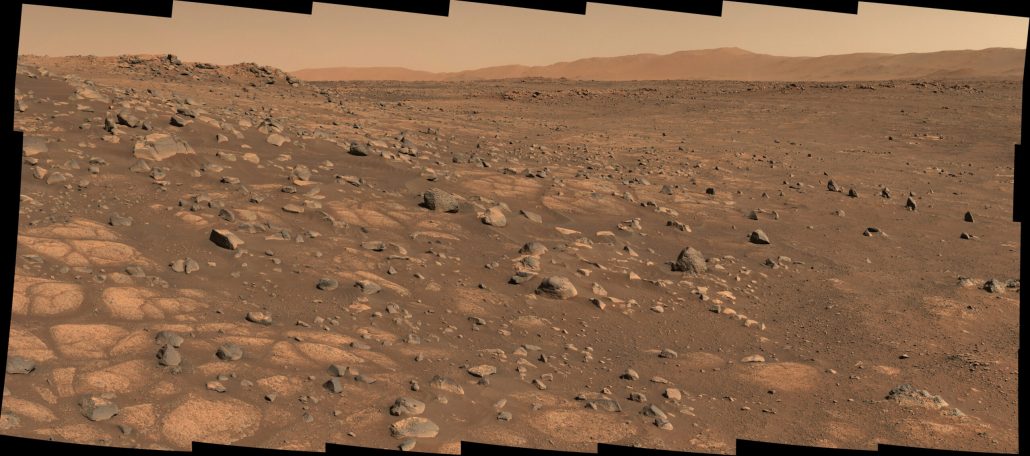Bacteria that can make humans sick could survive on Mars
The findings have implications for future explorers and planetary protection measures

Mars’ Jezero crater, as seen here by NASA’s Perseverance rover, might look inhospitable but recent experiments suggest that common terrestrial bacteria could survive on the planet’s surface.
JPL-Caltech/NASA, ASU, MSSS
Future interplanetary explorers beware: Hitchhiking bacteria brought to Mars on human bodies might not only survive the harsh conditions on the Red Planet’s surface but also potentially thrive.
Recent experiments exposed four common disease-causing microbes to a simulated Mars-like environment, with its lack of water, scant atmospheric pressure, deadly ultraviolet radiation and toxic salts. The bacteria remained alive for various periods of time and, in some cases, even grew in the imitation Martian sands, researchers report in the January Astrobiology.
The findings have implications for astronaut health and efforts to prevent contamination of other worlds (SN: 1/10/18). They also underscore the fact that “bacteria are really resilient little creatures that survive a lot of things, which is why they’ve existed for billions of years on Earth,” says Samantha Waters, a microbiologist at Mercer University in Atlanta, Ga., who was not involved in the experiments.
Previously, researchers seeking to understand the survivability of microbes on Mars have mostly focused on extremophile organisms — those living in places on Earth with lots of radiation, salt, temperature swings or aridity (SN: 11/2/22). But in 2020, a team of scientists found that several bacterial species that live on or inside the human body were able to grow in a medium resembling the nutrient-poor conditions found in meteorites.
That made some of the researchers wonder how such bugs would hold up under the unforgiving environment of Mars. So several members of that team, along with microbiologist Tommaso Zaccaria, placed colonies of Burkholderia cepacia, Klebsiella pneumoniae, Pseudomonas aeruginosa and Serratia marcescens in a box with simulated Martian conditions and regolith, or soil like that found on the surface of Mars. Those four microbes usually live harmlessly on or in us but can become pathogenic when stressed.
“At the beginning, we thought that the regolith would have a toxic effect on the cells so it would limit their growth,” says Zaccaria, of the German Aerospace Center in Cologne. “But instead, we saw that it was the opposite.”
Three of the species survived the experiment, with P. aeruginosa in particular growing steadily for up to 21 days. “It was quite remarkable,” Zaccaria says.
He and his colleagues are now trying to figure out just how the microbes held on. Perhaps in the crannies of the regolith, the bacteria managed to find small oases with enough water, nutrients and protection from the deadly UV radiation, Zaccaria says. The researchers are also interested in determining how the human immune system — which tends to get stressed and dysregulated during spaceflight — will respond to bugs that have gone through such travails (SN: 4/11/19).
The results suggest that human missions to Mars should bring plenty of different antibiotics to deal with disease-causing bacteria surviving and perhaps mutating on the Martian surface, then reinfecting us. And since we don’t want searches for life on Mars to accidentally mistake a terrestrial bug for a native Martian one, Zaccaria also recommends that areas of the Red Planet be set aside like national parks, where humans would send only robotic vehicles and not our bacteria-spewing bodies.
Waters points out that human ingenuity will hopefully find ways to mitigate such problems, which shouldn’t scare us away from sending people beyond our planet. “At the end of the day, we want to move forward and explore our solar system more,” she says. “We try our best and that ultimately will lead to some really beautiful discoveries and some really cool history.”







